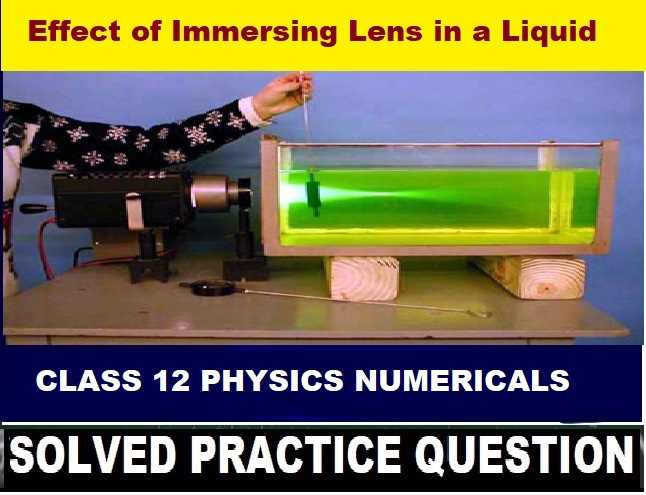Change of State in Matter Class-8th Goyal Brothers Physics Solutions Chapter-1. We Provide Step by Step Answers of Objective, True False , Fill in the blanks, Match the following , Short/Long Answer Type of Chapter-1 Matter, Unit-2 Visit official Website CISCE for detail information about ICSE Board Class-8.
Change of State in Matter Class-8th Goyal Brothers Physics Solutions Ch-1 (unit-2)
On The Basis of Kinetic Theory
| Board | ICSE |
| Class | 8th |
| Subject | Physics |
| Book Name | Goyal Brothers |
| Chapter-1 | Matter |
| Unit-2 | Change of state in Matter using Kinetic Theory |
| Topic | Solution of exercise questions |
| Session | 2023-24 |
OBJECTIVE TYPE QUESTIONS
A. Fill in the blanks :
- During the change of state of a substance its temperature remains _constant_.
- The temperature at which a solid starts changing to liquid state is called _melting point_.
- The amount of heat required to change 1 gm of a substance at its melting point into liquid state without any rise in temperature is called specific _latent heat fusion_.
- The amount of heat required to change 1 gm of of liquid into its gaseous state without any rise in temperature is called specific _latent heat of vapourisation_.
- _Steam_ has the highest specific latent heat of vaporisation.
B. Statement given below are incorrect. write the correct correct statement:
1. The specific latent heat of ice is 363 Jg-1
Correct Statement: The specific latent heat of ice is 336 Jg-1
2. The boiling hot water causes more severe burns than the steam at 100°C.
Correct Statement: The the steam causes more severe burns than boiling hot water at 100°C
3. The process by which a gas changes to a liquid state at some fixed temperature, with the absorption of heat energy is called vaporisation.
Correct Statement: The process by which a gas changes to a liquid state at some fixed temperature, with the absorption of heat energy is called Condensation.
4. It becomes cold during snowfall.
Correct Statement: It becomes warm during snowfall.
5. Water at 0°C cools a soft drink bottles better than ice at 0°C
Correct Statement: Ice at 0°C cools a soft drink bottles better than Water at 0°C.
C. Write ‘True’ or ‘False’ for the following statements :
1. The process of changing a solid at its melting point into liquid state, without any rise in temperature is called fusion. [F]
2. Heat energy required to melt 1g of ice to 1g of water at 0°C is 2260j.[F]
3. Steam at 100°C causes more severe burns than water at 100°C . [T]
4. The temperature at which a liquid changes into gaseous state without any rise in temperature is called liquefaction point. [F]
5. A vapour is a gaseous state of a liquid below its boiling point. [F]
D. Tick (√) the most appropriate answer.
1. The SI unit of latent heat is :
(a) Jg-10C-1
(b) J0C-1
(c) JKg-1
(d) JKg-10C-1
Ans: (a) Jg-10C-1
2. The specific latent heat of fusion of ice is:
(a) 4.2 Jg-10C-1
(b)4200 Jkg-10C-1
(c) 336 Jg-1
(d)336 Jg-1
Ans: (b)4200 Jkg-10C-1
3. During thaw (melting of snow) the atmosphere gets :
(a) warm
(b) Cold
(c) very hot
(d) very cold
Ans: (d) very cold
4. The substance having the highest specific latent heat of fusion is :
(a) lead
(b) wax
(c) ice
(d) gold
Ans: (c) ice
5. The substance having the highest specific latent heat of Vaporisation is :
(a) Mercury
(b) steam
(c) Alcohol
(d) petrol
Ans: (b) steam
IV. Match the statement in Column A with those in Column B:
Column A |
Column B |
1. The heat energy required to raise the temperature of a given mass of substance through 10C. |
1. Specific heat capacity |
2. The heat energy required to convert 1g of a substance at its melting point in liquid state without any rise in temperature. |
2. Specific latent heat of vaporisation |
3.The heat energy required to convert 1g of a substance through 10C. |
3. ice |
4. The heat energy required to convert 1g of a liquid at its boiling point into gaseous state without any rise in temperature. |
4. Heat capacity |
5. A substance having specific latent heat of fusion 336*103 JKg-1 |
5. Specific latent heat of fusion. |
Answer:
| Column A | Column B |
| 1. The heat energy required to raise the temperature of a given mass of substance through 10C. |
4. Heat capacity |
| 2. The heat energy required to convert 1g of a substance at its melting point in liquid state without any rise in temperature. |
5. Specific latent heat of fusion. |
| 3.The heat energy required to convert 1g of a substance through 10C. |
1. Specific heat capacity |
| 4. The heat energy required to convert 1g of a liquid at its boiling point into gaseous state without any rise in temperature. |
2. Specific latent heat of vaporisation |
| 5. A substance having specific latent heat of fusion 336*103 JKg-1 |
3. ice |
STUDY QUESTIONS
Question 1. Define the following:
(a) Specific latent heat of fusion
(b) Specific latent heat of vaporisation
Answer:
(a) Specific latent heat of fusion: Specific latent heat of fusion is defined as the quantity of heat required to convert a unit mass of the substance from solid to liquid state at its melting point.
(b) Specific latent heat of vaporisation: Specific latent heat of vapourization is the quantity of heat required to convert unit mass of a substance from liquid to vapour state without change of temperature.
Question 2. Define the following and state their numerical value in SI system
(a) Specific latent heat of fusion of ice.
Answer: The specific latent heat fusion is the heat energy needed to change 1 kg of the ice in its solid state at its melting point to 1 kg of the ice in its liquid state, and that released when 1 kg of the liquid changes to 1 kg of solid. Specific heat of fusion of ice is 0. 336 MJ/kg
(b) Specific latent heat of vaporisation of steam.
Answer: Specific latent heat of vaporization is the amount of heat energy required to change the unit mass of water at 100 °C into steam at 100 °C. Its value is 226 x 104 J kg–1. Hence, the specific latent heat of vaporization of steam is 226 x 104 J kg–1
Question 3.
(a) During change of state, temperature does not rise or fall. what happens to the heat energy supplied or given out? Explain.
Answer: There is no rise in temperature when there is a change in state of matter. When a substance undergoes a change of state when it is heated, the heat is absorbed by the particles of that substance. This is called latent heat, and it is because of this process that the temperature does not rise at all
(b) Explain the change of state from solid to liquid on the basis of kinetic theory.
Answer: When a solid is heated, the kinetic energy of the molecules increases. When the kinetic energy possessed by the molecules reaches the point where it completely overcomes the intermolecular force, the state changes and the solid turns into a liquid
Question 4. Define the following:-
- Fusion: The process by which a substance changes from a solid state to a liquid state is called fusion. Fusion is also called melting.
- Fusion point: The temperature at which melting takes place is called fusion point.
- Solidification: A phase transition in which a liquid turns into a solid when its temperature is lowered below its freezing point.
- Solidification point: The temperature at which solidification starts taking place is called solidification point.
- Vaporisation: It can be defined as the process in which the liquid state changes into the vapour state.
- Boiling point: Temperature at which the pressure exerted by the surroundings upon a liquid is equaled by the pressure exerted by the vapour of the liquid.
- Liquefaction: During an earthquake, the shaking ground may become much less solid as soil and groundwater combine to form a material that acts like a liquid. This process is called liquefaction.
- Liquefaction point: The melting point (sometimes called liquefaction point) is the temperature and pressure at which a solid becomes a liquid.
- Deposition: The process in which a gas directly changes into its solid state, without entering the liquid state.
Question 5. Explain the following :
(a) Why do soft drink bottles cool better in ice at 00C than water at 00C ?
Answer: Soft drink bottles cool better in ice at 00C than water at 00C because ice takes away more heat from the drink while melting as a result of high specific latent heat capacity of ice.
(b) Why the weather becomes bitterly cool when snow starts melting ?
Answer: Snow needs heat energy to melt which is equal to the latent heat of fusion. In order to get that heat ,it absorbs heat from the surroundings due to which the surroundings temperature falls and it feels cold and the weather becomes bitterly cool when snow starts melting.
(c) Why does it becomes warm during snowfall?
Answer: The weather becomes warm when it snows as an enormous amount of heat energy is released when ice is formed, which makes the weather warm.
(d) why do the glaciers not melt completely during summer?
Answer: The latent heat of melting of ice is 80cal. g−1 or 80×4. 2=336J , therefore each 1 gram of ice requires 336J of heat to melt , this much heat is not available to the large mass of ice on glaciers even in summer so ice doesn’t melt completely in summer or winter.
(e) Why are the burns caused by steam more severe than those caused by boiling water.
Answer: Steam has more warmth and vitality than water. Due to its dormant warmth of vaporization, it will produce more burn than boiling water. Steam contains the heat energy of boiling water as well as the latent heat of vaporization.
— : end of Change in States of Matter Class-8th Goyal Brothers :–-
Return to- ICSE Class -8 Goyal Brothers Physics Solutions
Thanks
Please share with your friends if you find it useful


